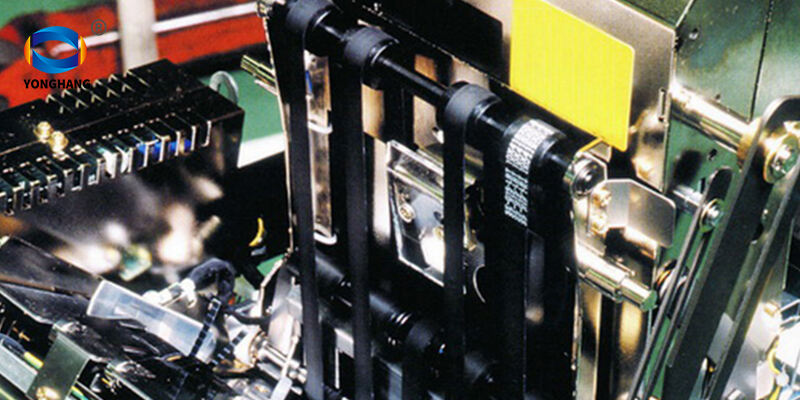ATM belts serve as the backbone of cash handling systems, directly influencing transaction speed, accuracy, and reliability. Their textured surfaces grip bills without slippage while navigating rollers and gears precisely—misalignment or wear can trigger sensor errors leading to transaction failures.
Modern ATM systems increasingly rely on robust belt designs to meet 24/7 availability expectations. Financial institutions that implement proactive replacement cycles reduce unplanned outages by 62% compared to reactive repairs, preserving operational continuity.
How ATM Belts Support Cash Handling and Dispensing Mechanisms
Precision engineering ensures bills move seamlessly from storage cassettes to dispensing mechanisms. Field tests show even a 0.1mm deviation in belt alignment increases dispensing errors by 34%, underscoring the need for micron-level accuracy.
Key performance factors include:
- Material composition: Layered polymers with nylon-reinforced cores withstand 100,000+ dispensing cycles
- Tension consistency: Maintaining 18-22 N/mm² prevents misfeeds
- Surface integrity: Micro-cracks in high-friction zones accelerate wear
Impact of Belt Performance on ATM Uptime and Service Reliability
Worn belts account for 41% of mechanical failures in ATMs, particularly in urban areas processing 3,000+ transactions monthly. The consequences cascade:
- Slowed transaction speeds
- Increased jam rates (60% higher in non-compliant systems)
- Complete system halts
Technicians using laser tension meters and digital calipers during quarterly maintenance reduce failure rates by 85% when adhering to ISO 13050:2015 tolerances.
Design and Materials: Engineering Durable ATM Belts
Core Materials for Durability and Flexibility
Modern belt designs combine:
- Polyurethane or rubber layers (last 2-3 years vs. traditional rubber)
- Nylon-reinforced cores
- Heat-resistant insulation
Hybrid materials demonstrate 40% better abrasion resistance and accommodate ±3% elongation without integrity loss—critical for aging mechanisms.
Precision in Thickness, Tension, and Alignment
Industry standards mandate:
| Parameter | Tolerance |
|---|---|
| Thickness | ±0.15mm |
| Tension | 18-22 N/mm² |
| Alignment | <0.5° deviation |
Machines meeting these specs experience 60% fewer jams. Edge wear exceeding 2% of initial belt length precedes 34% of unplanned outages.
Common Failures and Their Impact on ATM Performance
Slippage and Misalignment
34% of ATM errors originate from belt slippage, often in machines processing 2,000+ weekly transactions. Just 1mm misalignment causes:
- Skewed bill feeds
- False jam alerts
- Incomplete transactions
Monthly alignment checks reduce these failures by 72%.
Wear and Tear in High-Traffic ATMs
Urban ATMs endure:
- 15kg lateral force per withdrawal
- 40+ friction cycles per transaction
- 18hrs/day operation
Belt lifespan decreases by 40% in units processing 500+ daily withdrawals, necessitating 6-month (vs. 12-month) replacement cycles.
Contamination by Dust and Debris
Each transaction introduces 0.3mg particulate matter—18% of failures stem from:
- Salt corrosion (coastal areas)
- Concrete dust (construction zones)
- Mold spores (high humidity)
Quarterly deep cleaning with HEPA filters reduces particulate-related repairs by 61%.
Preventive Maintenance for Extended ATM Belt Lifespan
Proactive maintenance reduces cash-handling failures by 38%. Key strategies:
Scheduled Inspection Protocols
Quarterly checks should verify:
- Alignment (<0.5mm deviation)
- Tension (4.2-4.6 N/mm²)
- Surface integrity (micro-cracks)
Banks performing monthly visual audits report 52% fewer emergency replacements.
Cleaning and Lubrication Best Practices
In coastal regions, bi-monthly cleaning:
- Removes salt deposits
- Neutralizes polymer note residues
- Restores friction coefficients
Food-grade silicone lubricant on roller bearings every 6,000 cycles reduces flexural stress by 19%.
Innovations in ATM Belt Technology
Smart Belts with Embedded Sensors
IoT-enabled belts monitor:
- Real-time tension
- Wear patterns
- Alignment accuracy
Early adopters achieve 72% fewer service calls by predicting failures before jams occur.
Advanced Materials
Next-gen belts feature:
- Carbon-fiber layers (3x lifespan)
- Hydrophobic surfaces (98% dust repellent)
- Self-lubricating fibers (90% less friction wear)
These handle 50,000+ cycles without degradation, even in extreme climates.
AI-Driven Diagnostics
Machine learning analyzes 23 operational variables to:
- Schedule replacements during maintenance windows
- Predict failures 14 days in advance (89% accuracy)
- Reduce maintenance outages by 30%
This integration revolutionizes cash availability guarantees for next-generation ATMs.
Frequently Asked Questions
What are the key factors in maintaining ATM belts?
Key factors include maintaining proper alignment, tension consistency, and surface integrity to prevent errors and prolong belt life.
How frequently should ATM belts be replaced?
This depends on usage; high-traffic ATMs may need replacements every six months, while others might require annual replacement.
What are the benefits of proactive maintenance for ATM belts?
Proactive maintenance reduces unexpected outages and extends belt lifespan, leading to fewer emergency replacements and better machine performance.
What innovations are emerging in ATM belt technology?
Innovations include smart belts with sensors, advanced materials like carbon-fiber, and AI-driven diagnostics for predictive maintenance.
Table of Contents
- How ATM Belts Support Cash Handling and Dispensing Mechanisms
- Impact of Belt Performance on ATM Uptime and Service Reliability
- Design and Materials: Engineering Durable ATM Belts
- Common Failures and Their Impact on ATM Performance
- Slippage and Misalignment
- Wear and Tear in High-Traffic ATMs
- Contamination by Dust and Debris
- Preventive Maintenance for Extended ATM Belt Lifespan
- Scheduled Inspection Protocols
- Cleaning and Lubrication Best Practices
- Innovations in ATM Belt Technology
- Smart Belts with Embedded Sensors
- Advanced Materials
- AI-Driven Diagnostics
- Frequently Asked Questions

 EN
EN
 AR
AR
 HR
HR
 DA
DA
 NL
NL
 FR
FR
 DE
DE
 EL
EL
 HI
HI
 IT
IT
 JA
JA
 KO
KO
 NO
NO
 PL
PL
 PT
PT
 RO
RO
 RU
RU
 ES
ES
 TL
TL
 IW
IW
 ID
ID
 SR
SR
 SK
SK
 UK
UK
 VI
VI
 TH
TH
 TR
TR
 AF
AF
 MS
MS
 IS
IS
 HY
HY
 AZ
AZ
 KA
KA
 BN
BN
 LA
LA
 MR
MR
 MY
MY
 KK
KK
 UZ
UZ
 KY
KY
